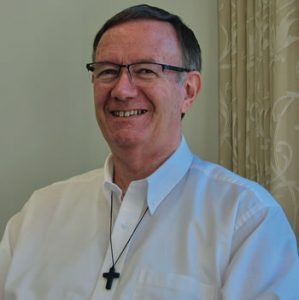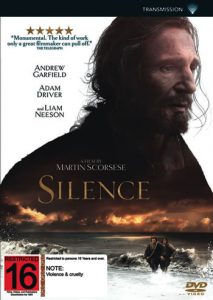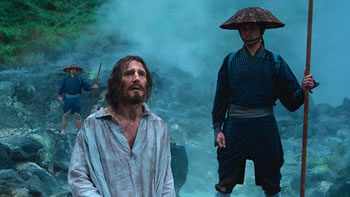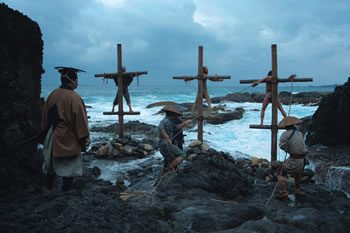Praying with the Movies

Fr Brian Cummings SM
Silence Directed by Martin Scorcese
For 25 years the possibility of Martin Scorcese making his film version of Shusaku Endo’s novel Silence has been a matter of conjecture: Will he? Won’t he? Can he?
Now that the film has been released, conjecture and debate continues.
For some critics, it’s a major disappointment calling it slow moving (at 161 minutes); with minimalist action; characters that fail to engage emotionally with the view er; intense cruelty and so on.
er; intense cruelty and so on.
Other critics are far more positive and see Silence as a movie that poses very significant intellectual questions on such matters as faith and just what is ‘apostasy’; cultural engagement and the role and place missionaries.
And that spectrum between disappointment and acclaim gives us a clue as to how we might engage with Silence on a spiritual level - because whatever else it is or isn’t, Silence is a movie that not only invites the audience to engage, it demands it, if we are to gain any sense of how Scorcese is aiming to bring Endo’s novel to the screen.
That level of engagement is for you to decide. If we wish to see Silence as purely an historical story of some early Christian missionaries in Japan, then we can do so - and we will likely find it tedious, uninspiring and horrific. Further, we may well - as some critics have said - see it as an attack on the whole concept of evangelisation and a statement that ultimately, faith is purely human and, when put under enough stress, doomed.
If we are willing to engage on a more intellectual level and enter into the questions the movie puts before us, then Silence becomes an intense, nearly three hour debate about the relationship of missionaries with the local faithful who have survived and endured in the faith in the absence of any priests; about the purpose of suffering and what is reasonable and possible to expect of people; about how often we can - or should even - forgive someone; about judgement of those who seem to have given up their faith in order to stay alive.

And there’s at least one other level of engagement that offers itself to us: to view the movie not only from the standpoint of its ‘message’; nor solely on an intellectual level; but as a meditation - an invitation to enter into prayer as we reflect on what we learn about ourselves as a result of having watched Silence.
To take such an approach is both very Marist (in the spirit of Luke 2:19-“Mary pondered all these things in her heart”) and also very Ignatian.
Essentially, by viewing the movie as a meditation we are asking ourselves “What moved me - either to Consolation or to Desolation - in this movie?”
In the Ignatian sense, how we view spiritual consolation and spiritual desolation depends on whether our basic orientation is towards intimacy with God or away from that intimacy. As such, consolation and desolation are not feelings but indicators of where we are pointed based on our underlying attitudes.
The difficulty for many of us, though, is in understanding just what is happening with us in terms of our basic orientation. What are our values? What really motivates us? Without a deep understanding of what these are, we are always open to the risk that our values and actions control us rather than vice versa.
By entering into a movie as a meditation, you can come to a greater awareness of what moves us in our lives in both positive and negative ways. By engaging with the movie we can reflect on what moves us to consolation (draws us out of ourselves and closer to God) and what moves us to desolation (closing in on ourselves).
And so we can see Silence engaging us not only on the level of this message and of the intellectual questions it poses, but also on the deeper level of “What is happening to me as I watch this movie?”
And here the values of quietness and reflection become central to engaging with Scorcese’s movie on a deeper level.
Just what is the ‘silence’ of the title? In terms of the movie (and Endo’s novel), it certainly includes God’s apparent silence in the face of doubt and of suffering, both spiritual and physical. It includes the natural silence of nature throughout the movie (in the absence of anything that could reasonably be called a musical score).
And from a Marist perspective you could also say at the silence includes the pondering of Mary - and us - as all these things are considered in the heart.
Also from a Marist perspective, it is impossible to view Silence as a meditation without taking into account our call to be “instruments of divine mercy”; to portray the “feminine features” of God, and to help to build a church which is not perceived in terms of power, planning, control, administration and competitiveness, but rather in terms of community, compassion, simplicity, mercy and fellowship.
To enter into the movie as a formal meditation, we could consider the following questions:
″ What elements touched me positively (moved me to consolation) in Silence and why?
″ How do these relate to my own life experiences?
″ What do they say to my present values and where I am on my spiritual path?
″ What elements in Silence unsettled or challenged me (moved me to desolation) and why?
″ How do these relate to my own life and my life experiences?
″ What do they say to my present values and where I am on my spiritual path?
″ How do they help me understand more what is going on within me, around me, in my family and community, in my work, in the society in which I live?
There are no neat and satisfying answers at the conclusion of Silence. Scorcese remarked in an interview that he found in the making of the picture that his way of seeing the world was changed. In viewing the movie and reflecting on it, we could ask ourselves what has changed in the way in which we see and understand ourselves and our world?
References
Monty Williams SJ The Gift of Spiritual Intimacy, pp 28-29
Craig Larkin SM, A Certain Way, p 50
Silence can be obtained through DVD suppliers such as Mighty Ape and streaming services such as Netflix.
Fr Brian Cummings is the director of Pā Maria Marist Spirituality Centre, Wellington
 Entries(RSS)
Entries(RSS)